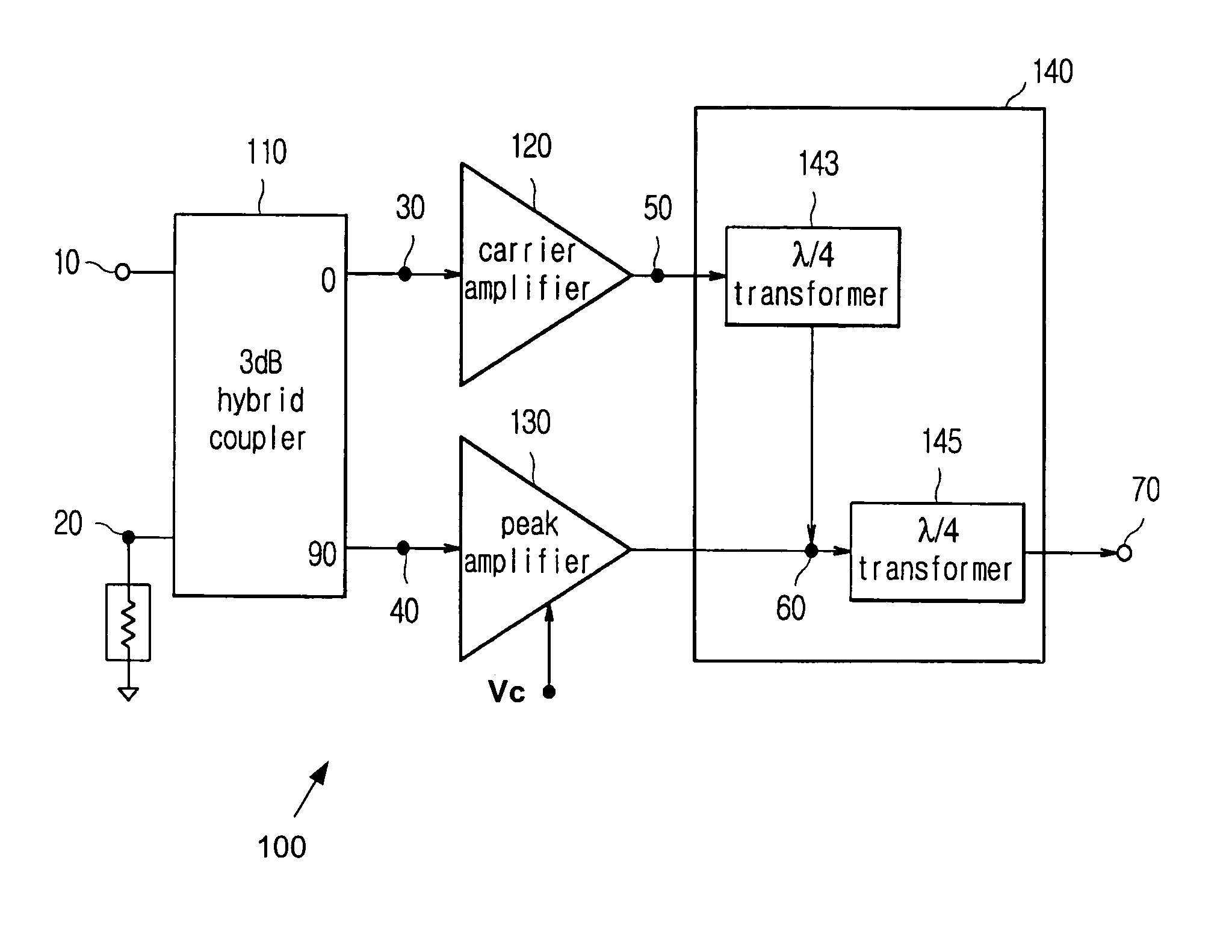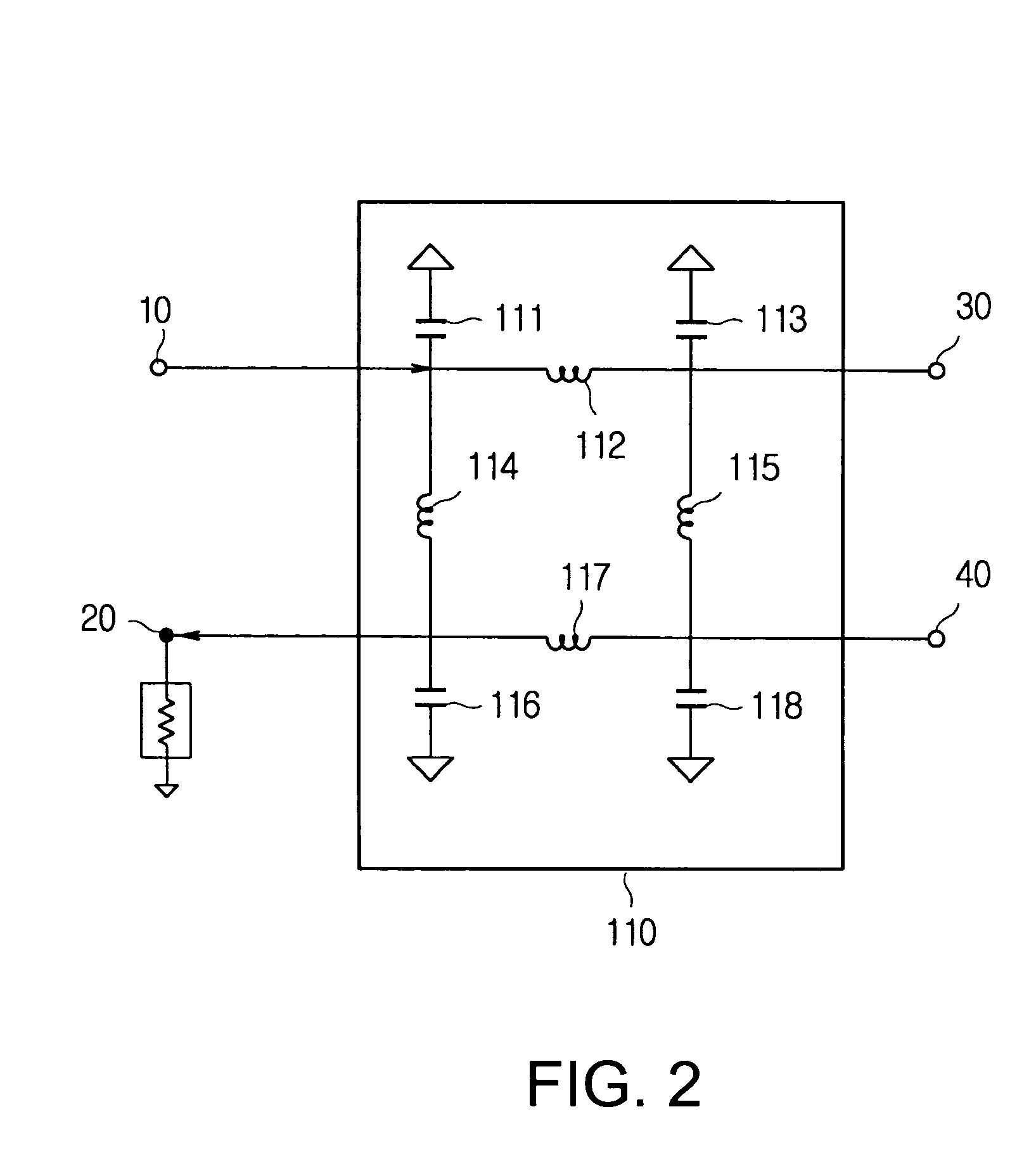High linearity doherty communication amplifier with bias control
a communication amplifier and bias control technology, applied in the direction of amplifier combinations, amplifier modifications to reduce non-linear distortion, sustainable buildings, etc., can solve the problems of reducing the efficiency of the overall system, reducing the talk time, and reducing the battery size and power, so as to improve efficiency and linearity, and manage the non-linearity characteristic of the power amplifier.
- Summary
- Abstract
- Description
- Claims
- Application Information
AI Technical Summary
Benefits of technology
Problems solved by technology
Method used
Image
Examples
Embodiment Construction
[0033]Hereinafter, a detailed description will be given with reference to the attached drawings as to an exemplary power amplifier in a mobile handset in accordance with various embodiments of the present invention.
[0034]FIG. 1 illustrates the structure of an exemplary power amplifier in a mobile handset in accordance with a specific embodiment of the present invention. The power amplifier 100 illustrated in FIG. 1 comprises a hybrid coupler, such as exemplary 3 dB hybrid coupler 110, a carrier amplifier 120, a peak amplifier 130, and an output matching unit 140. 3 dB hybrid coupler 110 distributes certain input powers to carrier amplifier 120 and peak amplifier 130, minimizes interference between carrier amplifier 120 and peak amplifier 130 and transmits signals in such a manner that the phase of input power of peak amplifier 130 is 90° (λ / 4) delayed from the phase of input power of carrier amplifier 120. Accordingly, the 3 dB hybrid coupler 110 compensates for a later processing o...
PUM
 Login to View More
Login to View More Abstract
Description
Claims
Application Information
 Login to View More
Login to View More - R&D
- Intellectual Property
- Life Sciences
- Materials
- Tech Scout
- Unparalleled Data Quality
- Higher Quality Content
- 60% Fewer Hallucinations
Browse by: Latest US Patents, China's latest patents, Technical Efficacy Thesaurus, Application Domain, Technology Topic, Popular Technical Reports.
© 2025 PatSnap. All rights reserved.Legal|Privacy policy|Modern Slavery Act Transparency Statement|Sitemap|About US| Contact US: help@patsnap.com



